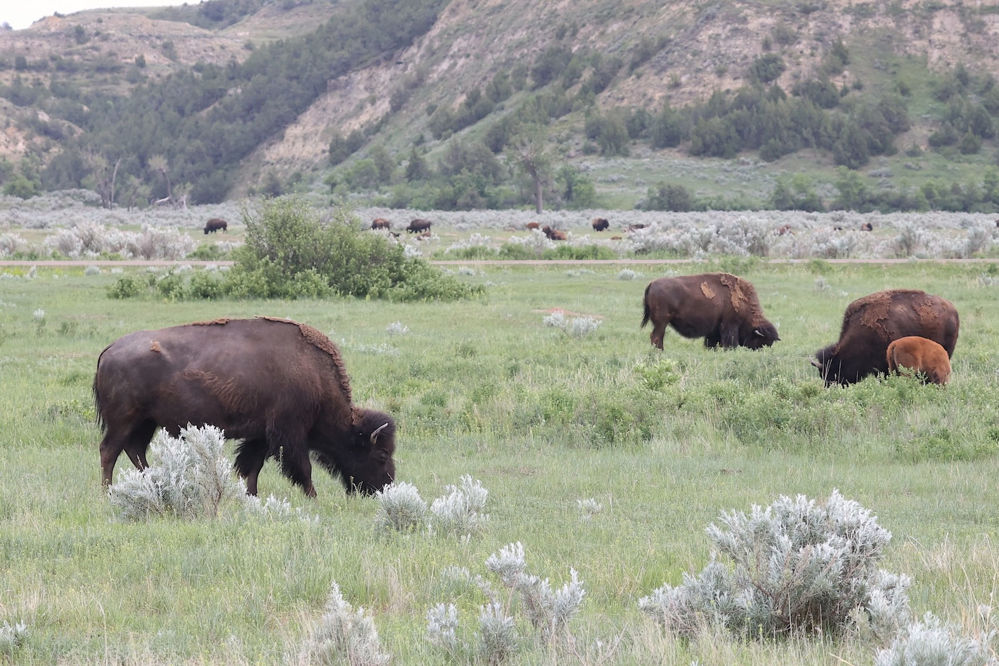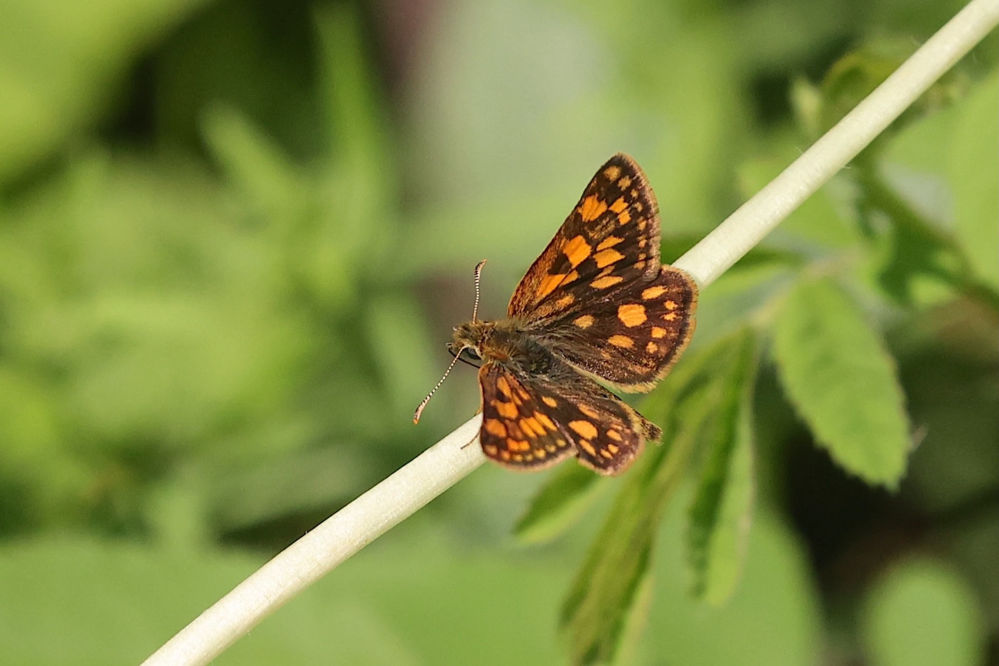Departure Date: June 1 - 12, 2025
Compiled By: Michael O'Brien
Trip Leaders: Michael O'Brien, Louise Zemaitis, Ron Martin
Toll Free: 800.328.8368
Phone: 512.328.5221
Grand North Dakota 6/1/2025-6/12/2025

Our inaugural tour to this land of broad vistas and remarkable abundance was both highly productive and a lot of fun. Visiting pristine grasslands and pothole marshes to rugged canyons to lush deciduous forests, the impressive 184 bird species we recorded on this tour illustrates how diverse North Dakota is.
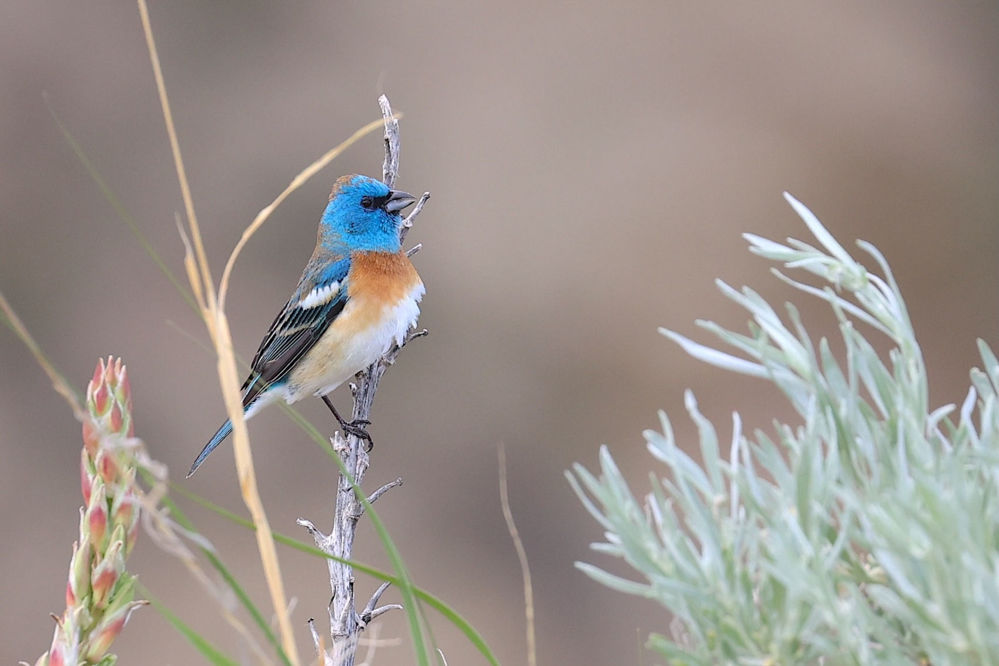
Lazuli Bunting © Michael O'Brien
Beginning in Fargo near the Minnesota border, we visited the Red River Valley and Mirror Pool Wildlife Management Area, both areas with tracts of deciduous forest that hold numerous species with a decidedly eastern affinity. Here, some of the local breeding species we found included Ruby-throated Hummingbird, Yellow-bellied Sapsucker, Red-bellied Woodpecker, Great Crested Flycatcher, Yellow-throated Vireo, Ovenbird, American Redstart (building its nest!), Rose-breasted Grosbeak, and Indigo Bunting. A Barred Owl hooting as it looked down on us was especially exciting! We also found a few late migrant passerines including Olive-sided and Alder flycatchers, and Magnolia Warbler. The adjacent Sheyenne National Grasslands gave us our first taste of grassland species that would be with us for much of the tour, such as Ring-necked Pheasant, Eastern and Western kingbirds, Lark Sparrow, Western Meadowlark, and Bobolink. We also got a good start to our mammal list with sightings of Thirteen-lined and Franklin’s ground squirrels and, most exciting of all, a Least Weasel carrying a vole! They were nearly the same size!
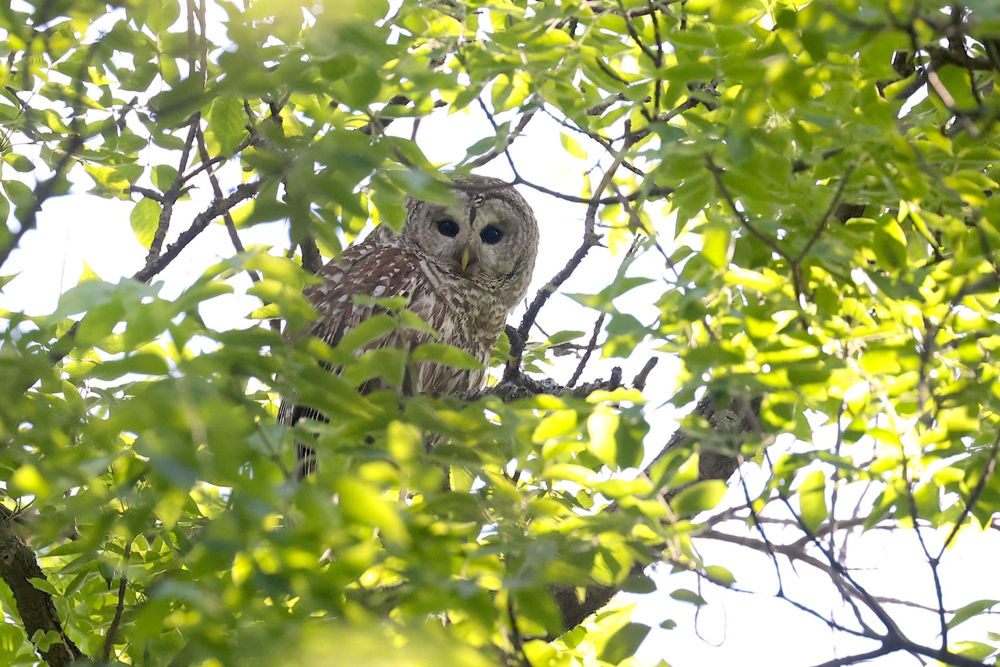
Barred Owl © Michael O'Brien
Continuing west, we quickly began to explore North Dakota’s famous pothole country, a nursery for a host of waterfowl and other marsh species. Stunning Yellow-headed Blackbirds were present at every marsh with cattails in standing water, Black Terns floated gracefully over lakes and marshes, delicate Wilson’s Phalaropes spun in circles on marsh pools, and striking American Avocets fed along pond edges, sometimes with tiny chicks in tow. Flocks of Franklin’s Gulls with their characteristic pink-washed breasts were always coming and going, often stopping to feed in plowed fields. Eighteen species of waterfowl were present at various lakes and ponds including large numbers of showy Northern Shovelers, Redheads, Canvasbacks, and Ruddy Ducks. Meanwhile, flocks of Canada Geese were almost always flying north overhead, “molt migrants” heading to higher latitudes to begin their flightless post-breeding molt period. And even in early June, these potholes still had a good number of migrant shorebirds such as Stilt, White-rumped, and Pectoral sandpipers, all still en route to arctic breeding areas.
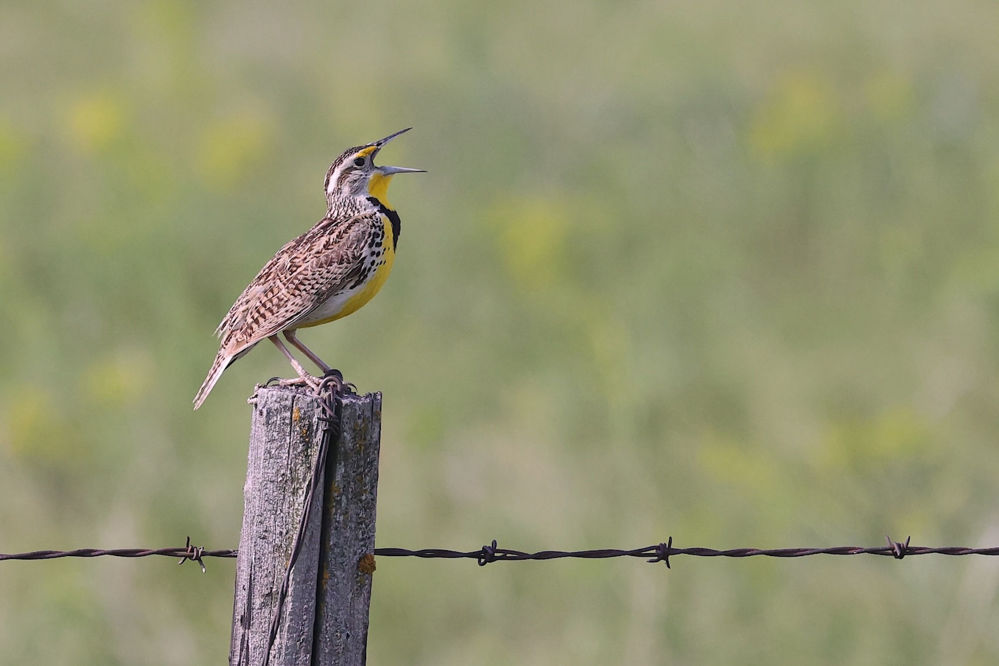
Western Meadowlark © Michael O'Brien
A few potholes were particularly exciting, such as Horsehead Lake, where we had amazing views of a calling Sora, several fly-by American Bitterns, and excellent comparisons of Clark’s and Western grebes. In the grassy transitional wetlands between Lake Henry and the surrounding prairie, we had excellent views of the skulking LeConte’s Sparrow along with several Sedge Wrens. With a backdrop of bubbling songs from Marsh Wren and Bobolink, the courtship flights of Wilson’s Snipe and Marbled Godwit, and a soaring Ferruginous Hawk, our senses were overloaded!
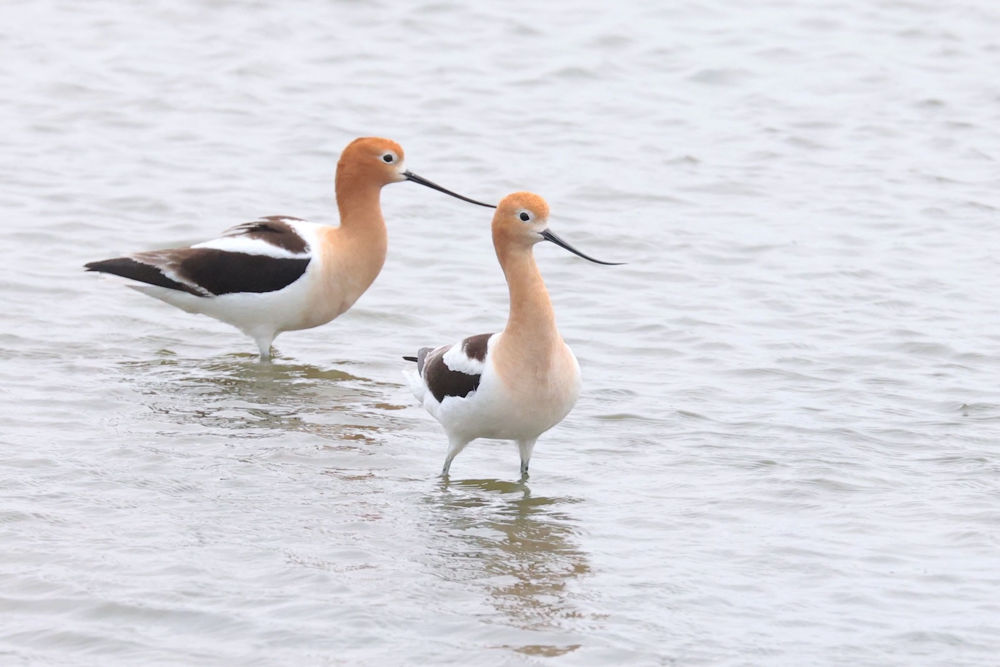
American Avocets © Michael O'Brien
As we were enjoying the pothole marshes, we were also soaking in the heart of the North Dakota prairies. Although seemingly bleak at a glance, these grasslands were full of life, and the subtle cacophony of bird song in this habitat was pure magic. In our travels, we came across Sharp-tailed Grouse, Upland Sandpiper, Marbled Godwit, Willet, Swainson’s and Ferruginous hawks, Horned Lark, Western Meadowlark, Bobolink, Dickcissel, Chestnut-collared Longspur, and a dozen sparrows including Grasshopper, Clay-colored, and Vesper. We visited several “school sections,” parcels of land managed by the state Department of Land Trust to generate revenue for education. These parcels contain some of the best prairie habitat in the state and often hold good populations of some of the scarcer species. In particular, we had wonderful encounters with Baird’s Sparrow and Sprague’s Pipit in these school sections, as well as up-close views of Chestnut-collared Longspur, Bobolink, Grasshopper Sparrow, and many others.
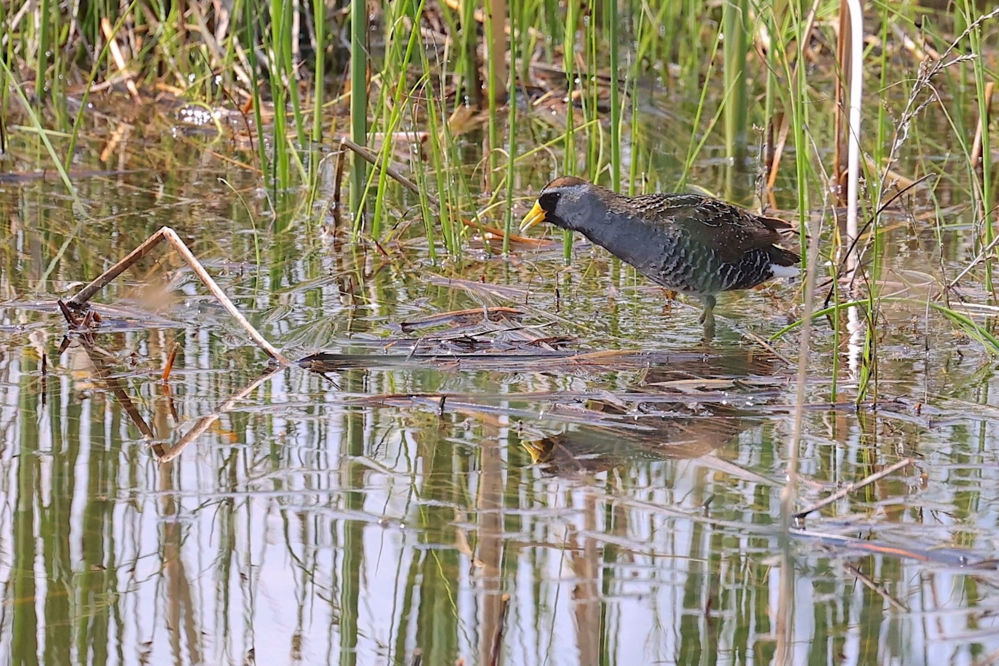
Sora © Michael O'Brien
The westernmost segment of our tour was based in Medora, just outside Theodore Roosevelt National Park and along the drainage of the Little Missouri River. This region, known as the “Badlands,” is arid and hilly with beautiful canyons and buttes exposing colorful sedimentary layers. Herds of American Bison roam free through the park, and “towns” of Black-tailed Prairie Dogs are numerous. Birdlife here is very much western, and we enjoyed seeing species like Western Wood-Pewee, Say’s Phoebe, Violet-green Swallow, Black-billed Magpie, Rock Wren, Spotted Towhee, Yellow-breasted Chat (the western subspecies just reaches here), Bullock’s Oriole, and Black-headed Grosbeak. Spectacular Lazuli Buntings were numerous, and we even got to see one alongside an out-of-place Indigo Bunting. Large stands of Ponderosa Pine at Logging Camp Ranch were home to numerous Red Crossbills, not a species one expects to see in the prairies! Nearby grasslands harbored a few species we did not see farther east, such as Long-billed Curlew, Golden Eagle, Burrowing Owl, Loggerhead Shrike, and Lark Bunting. And to complete our swing through the west, one evening some of us went to the Burning Hills Amphitheatre to watch the Medora Musical, a fun musical revue focusing on the Wild West and particularly Theodore Roosevelt’s time in the area.
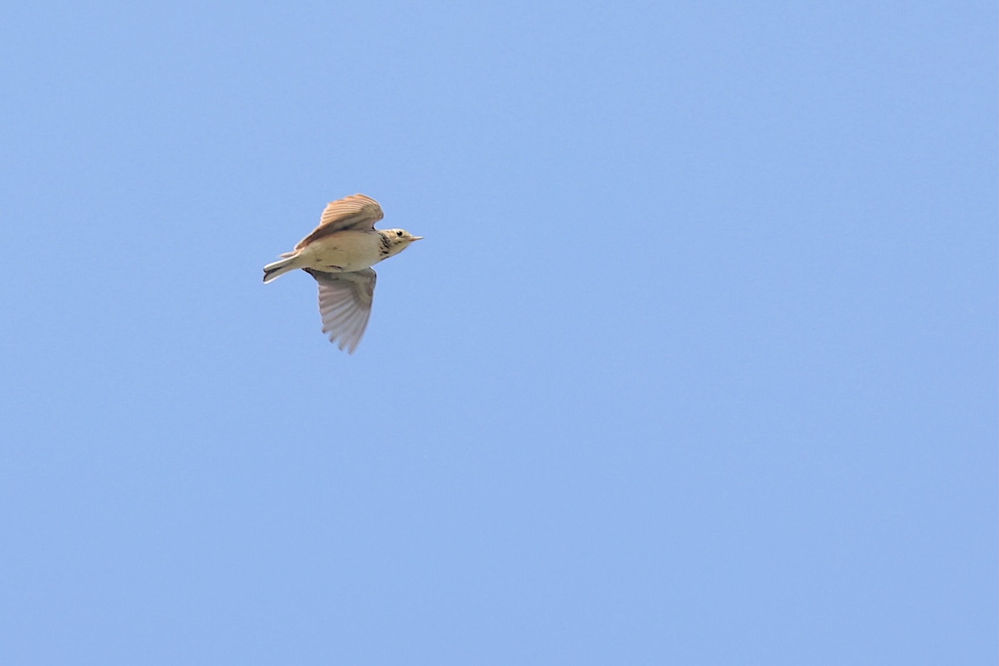
Sprague's Pipit © Michael O'Brien
The final segment of our tour, based out of Minot, saw us exploring more grassland and prairie pothole habitats, as well as visiting the Turtle Mountains on the Manitoba border. The Turtle Mountains are a plateau that rises 2,500 feet above sea level. Though only about 400 feet above the surrounding prairie, the habitat here is very different, with stunted oak and aspen woodlands, lakes, and bogs. Our day here had many highlights such as Common Goldeneye, Red-necked Grebe, Common Loon (the only ones breeding in the state), Broad-winged Hawk, Common Raven, Purple Finch, Pine Siskin, Eastern Towhee, Ovenbird, Black-and-white and Orange-crowned warblers, and a number of beautiful butterflies from Canadian Tiger Swallowtail to Arctic Skipper. We were especially delighted to see a Ruffed Grouse walk across the road in front of us as we were leaving, matched in popularity only by the ice cream at Pride Dairy!
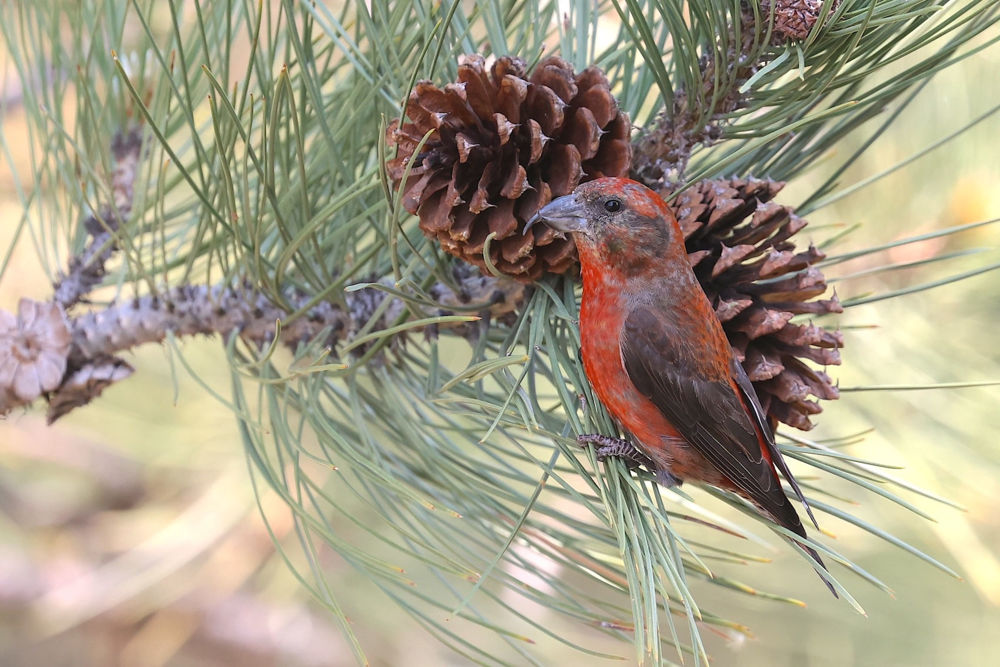
Red Crossbill ("Type 2") © Michael O'Brien
On our last day, we visited the famed Minot Sewage Lagoons (no birding tour is complete without a visit to a dump or sewage lagoon!), which held an astonishing abundance of waterfowl, grebes, terns, and other waterbirds. We were especially delighted to find a small flock of Red-necked Phalaropes, migrants still headed to their arctic breeding grounds. We also made stops along the Missouri River where a few Piping Plovers and Least Terns nest. After a visit to the Lewis and Clark Interpretive Center, we made one final stop at Double Ditch State Historic Site, the location of a Mandan Native American earth lodge village, which was occupied for more than 300 years but abandoned after the smallpox epidemic in the 1780s. As we strolled through the site, the sights and sounds of Upland Sandpiper, Western Kingbird, Grasshopper Sparrow, Bobolink, and Western Meadowlark were a fine sendoff from this land of endless horizons.
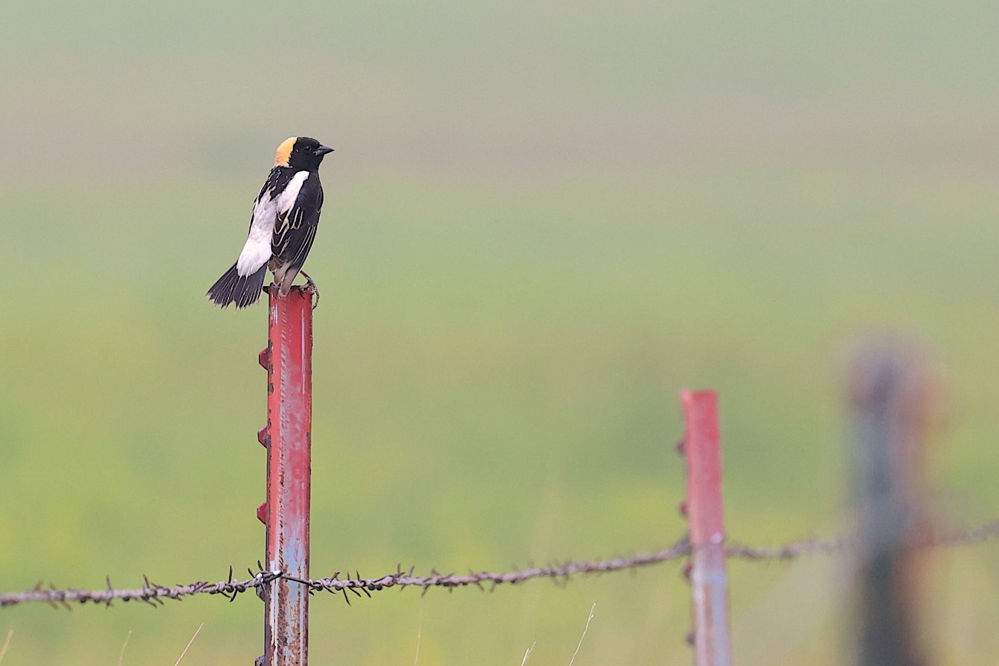
Bobolink © Michael O'Brien
A complete list of the birds recorded on our trip can be found at: https://ebird.org/tripreport/377702
Read the description for the next departure of this tour.
View Michael O'Brien's upcoming tour schedule.
View Louise Zemaitis's upcoming tour schedule.
ITINERARY
June 1 – Arrivals. Night in Fargo.
June 2 – Red River Valley: Forest River Park and Orchard Glen Park; Kemmer Waterfowl Production Area and Utke Waterfowl Protection Area potholes; Lake Bertha; Alica area potholes. Night in Fargo.
June 3 – Sheyenne National Grasslands: Jorgen’s Hollow Campground and CR-23; Mirror Pool Wildlife Management Area; Brown Ranch (The Nature Conservancy). Night in Steele.
June 4 – Kidder County including Tuttle School Section, Tuttle (town), 27th Avenue potholes, 22nd Street potholes, Pettibone (town), and Horsehead Lake. Night in Steele.
_1000.jpeg)
Tuttle School Section © Michael O'Brien
June 5 – Lake Henry wetlands and grasslands; Dewald Slough; The Paddle Trap (Bismarck); Theodore Roosevelt National Park: Painted Canyon overlook and Visitor Center. Night in Medora.
June 6 – 47th Street grasslands; Amidon (town); 60th Street prairie dog town; Little Missouri National Grassland: 140th Avenue and Logging Camp Ranch. Night in Medora.
June 7 – Theodore Roosevelt National Park: East River Road to Wind Canyon, Peaceful Valley, and Cottonwood Campground; evening Pitchfork Fondu and Medora Musical. Night in Medora.
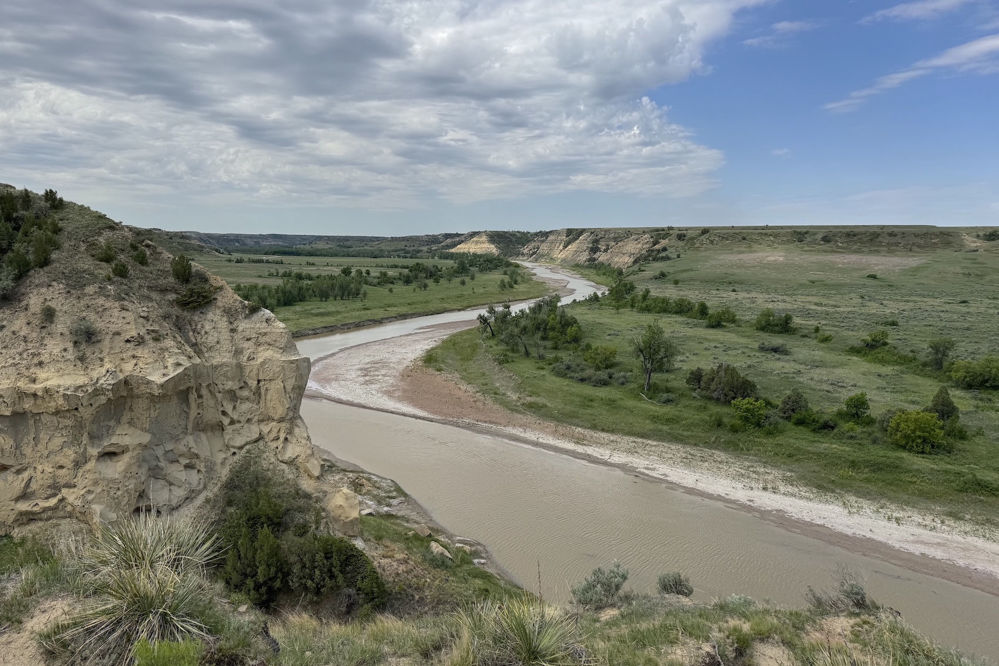
Wind Canyon © Michael O'Brien
June 8 – River Drive; Little Missouri National Grasslands (Talkington Dam area); Garrison Dam. Night in Minot.
June 9 – US-2 east of Stanley; Lucy School Section; Powers lake area; Kenmare (town); Des Lacs National Wildlife Refuge. Night in Minot.
June 10 – Antler area fields (27th Avenue); J. Clark Salyer National Wildlife Refuge (CR-6 crossing); Souris area; Turtle Mountains including Mystical Horizons, Lake Metigoshe State Park, and Pelican Lake. Night in Minot.
June 11 – Minot Sewage Lagoons; Fort Mandan; Lewis & Clark Interpretative Center; Riverside Lane (Washburn); Double Ditch Historic Site. Night in Bismarck.
June 12 – Departures.

